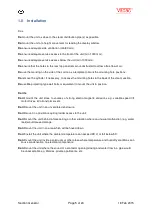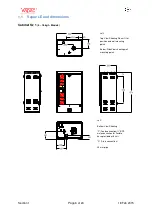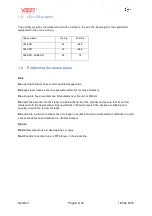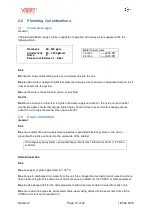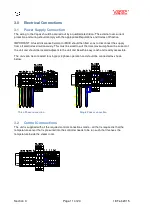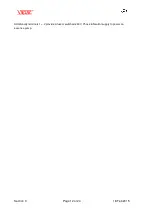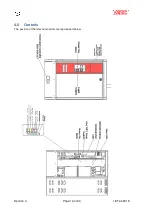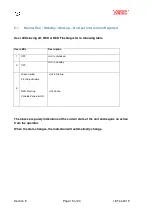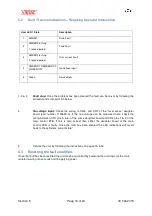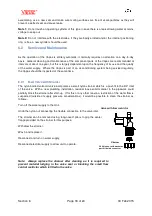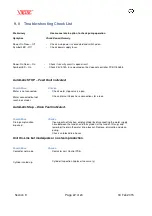
Section 6
Page 17 of 24
18 Feb 2015
6.0 Cylinder Exchange
Cylinder Life
The water hardness and the humidity demand at site will determine the effective life of a steam
cylinder. Units located in areas with naturally soft waters will experience the longer cylinder life,
possibly upwards of 12 months in calendar terms. With hard waters, a more frequent cylinder
exchange must be expected and cylinder exchange 2 or 3 times a year can be the average situation.
The normal scaling up of the Vapac steam cylinder is outside the VAPAC warranty.
6.1
Procedure for Cylinder Exchange
1. With power connected to the unit operate the Manual Drain switch and empty the steam cylinder.
2. Disconnect the VAPAC from the incoming electrical supply by means of the external disconnect
switch.
3. Remove the lockable door to the cylinder chamber and carefully ease off the electrode caps.
4. Loosen the hose clip and disconnect the steam hose from the top of the steam cylinder.
5. Using a twisting movement, lift the cylinder clear of its seating in the feed/drain manifold and
carefully remove the used cylinder from the unit.
6. Inspect the feed/drain manifold to ensure this is clear of sediment.
7. The drain pump can be removed for inspection/cleaning. By following the instructions for the drain
pump removal and cleaning below.
8. With the pump back in position after cleaning, insert the cylinder into the feed / drain manifold,
pushing it down firmly, and reconnect the steam hose.
9. The electrode caps must be reconnected in the same sequence in accordance with the details on
the collar supplied with the new cylinder.
10. The VAPAC unit is supplied with electrode cables routed to avoid contact with the removable door.
After a cylinder exchange, it is important to replace the cables as close as possible to their original
route.
Vapac Cleanable cylinders
Cleanable versions of the Vapac cylinders are available which can be opened to allow removal of
loose scale deposit. The cylinder designs are the same but instead of a welded join, the two parts are
brought together by a seal and two clamping rings with quick-release fasteners.
To order the equivalent cleanable cylinder use the same code but substitute the letters
CC
instead of
CM
or
CD
.
When servicing a cleanable cylinder take it to a service area where it is convenient to open it and to
dispose of the contents. When cleaning out loose material also remove any build-up on the end of the
short "cylinder full" electrode. Make sure the slotted strainer is clean, intact and in place. When re-



